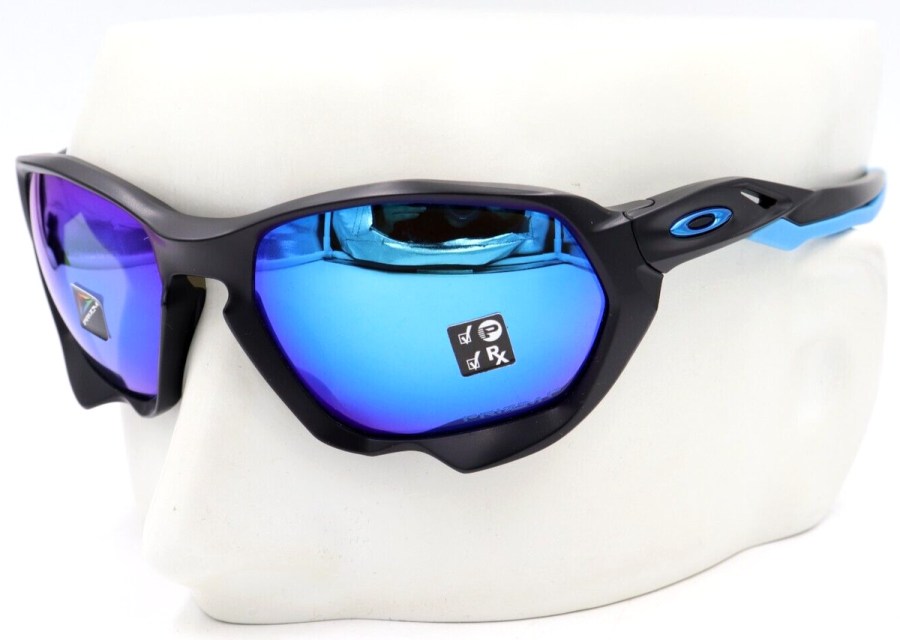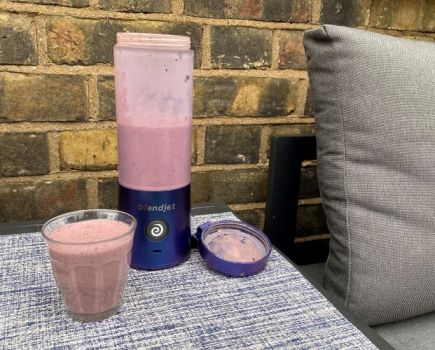Experienced cyclist Matt Ray appreciates the retro appeal of Oakley’s low-profile polarized shades, and awards them top marks for clarity and comfort.
After dozens of rides in the Oakley Plazma glasses, Matt was so impressed with them he put them top in our best cycling glasses guide. That’s because their fit was faultless on every surface, and they performed in all kinds of lighting and weather conditions. And, unlike the large, single-lens alternatives on test, the Plazmas are versatile enough to be worn on and off the bike.
Men’s Fitness verdict
If you liked Oakley’s Race Jackets, you’ll love the Plazmas. They may look old-school, but the clarity and comfort are positively futuristic.- Highly versatile
- Clever, close-fitting design
- Excellent small-lens alternative
- Polarized price
- Not ideal for aero
How we test cycling glasses
Our cycling product tester Matt Ray put this pair of glasses through their paces, wearing them on extended rides on a variety of terrain and different lighting conditions to see how they performed in overcast, bright and changing light – or indeed whether they shone particularly on road or off-road cycling sessions. He looked at comfort and fit, lens quality and ventilation, as well as price, availability, product options and durability before awarding an overall score.
The Sapphire Prizm P lenses are the jewels in the crown of these Oakley Plazma sunglasses. I loved how crisp everything looked through them, while somehow avoiding the occasional distractions of polarized lenses. And I was surprised at their versatility for cyclists turned off by massive shades.
Oakley Plazma features
These are the only polarized lenses that we featured as part of our big cycling glasses group test, and yes they really do stand out for ultimate lens clarity. The trend in cycling sunglasses is to avoid polarization due to their occasionally distracting light effects that some riders detect (and the cost, frankly).
Personally speaking, the rainbows never really bothered me anyway, and I could spot potholes fine with these Prizm P lenses. The polarization does make them unbeatable on the sunniest days.
What surprised me more was how versatile the Plazmas were for cycling. The frame is as wrapped as its humongous-lens cousins, but the eyepieces lock so closely to the face that they punch above their weight for field of view, albeit with the limitations of the lower frame in your peripheral vision (but even then, you can easily check the road behind you with a turn of the head, as the frame falls away in your field of view).
The Plazmas are smaller and closer-fitting than the other glasses on test, which combined with the comfy nose and arm rubber at the contact points makes them really easy to wear.
They are an ideal high-performance, light-weight choice for any cyclist who finds the dominant trend for oversized ‘90s frames and a single slab of lens, well, a bit much. Or, indeed, someone who needs prescription lenses.
The arms of the Plazma may look a bit chunky, but that allows them to achieve the cunning geometric trick that angles the eyepieces to match your face, but then sends the arms back down into the perfect plane to grip your head comfortably. It’s a deft touch.
Oakley Plazma performance
I didn’t know I was looking for low-profile, high-performance polarized cycling shades, but I definitely found them in the Plazma. I’d feel happy taking these comfy shades on longer road rides, aggressive MTB blasts and most things in between. I was always a fan of the Race Jackets back in the day, and the Plazmas update those with aplomb.
And the other versatility plus point? They don’t look out of place sans helmet, in a pub garden.
| Light transmission | 12% |
| Features | Suitable for prescription lenses, durable O-Matter frame |
| Lens colors | 7 colors available |
| Frame colors | 7 colors available |
Related content:







